We know for certain that a new Samsung XR/VR headset is in the works, with the device being made in partnership with Google. But much of the XR product’s details (XR, or extended reality, is a catchall for virtual, augmented, and mixed reality) are still shrouded in mystery.
This so-called Apple Vision Pro rival (an XR headset from Apple) will likely have impressive specs – Qualcomm has confirmed its new Snapdragon XR2 Plus Gen 2 chip will be in the headset, and Samsung Display-made screens will probably be featured. It'll also likely have an equally premium price tag. Unfortunately, until Samsung says anything officially, we won’t know exactly how much it will cost, or when it will be released.
But using the few tidbits of official info, as well as our industry knowledge and the rumors out there, we can make some educated guesses that can clue you into the Samsung XR/VR headset’s potential price, release date, and specs – and we’ve got them down below. We’ve also highlighted a few of the features we’d like to see when it’s eventually unveiled to the public.
Samsung XR/VR headset: Price
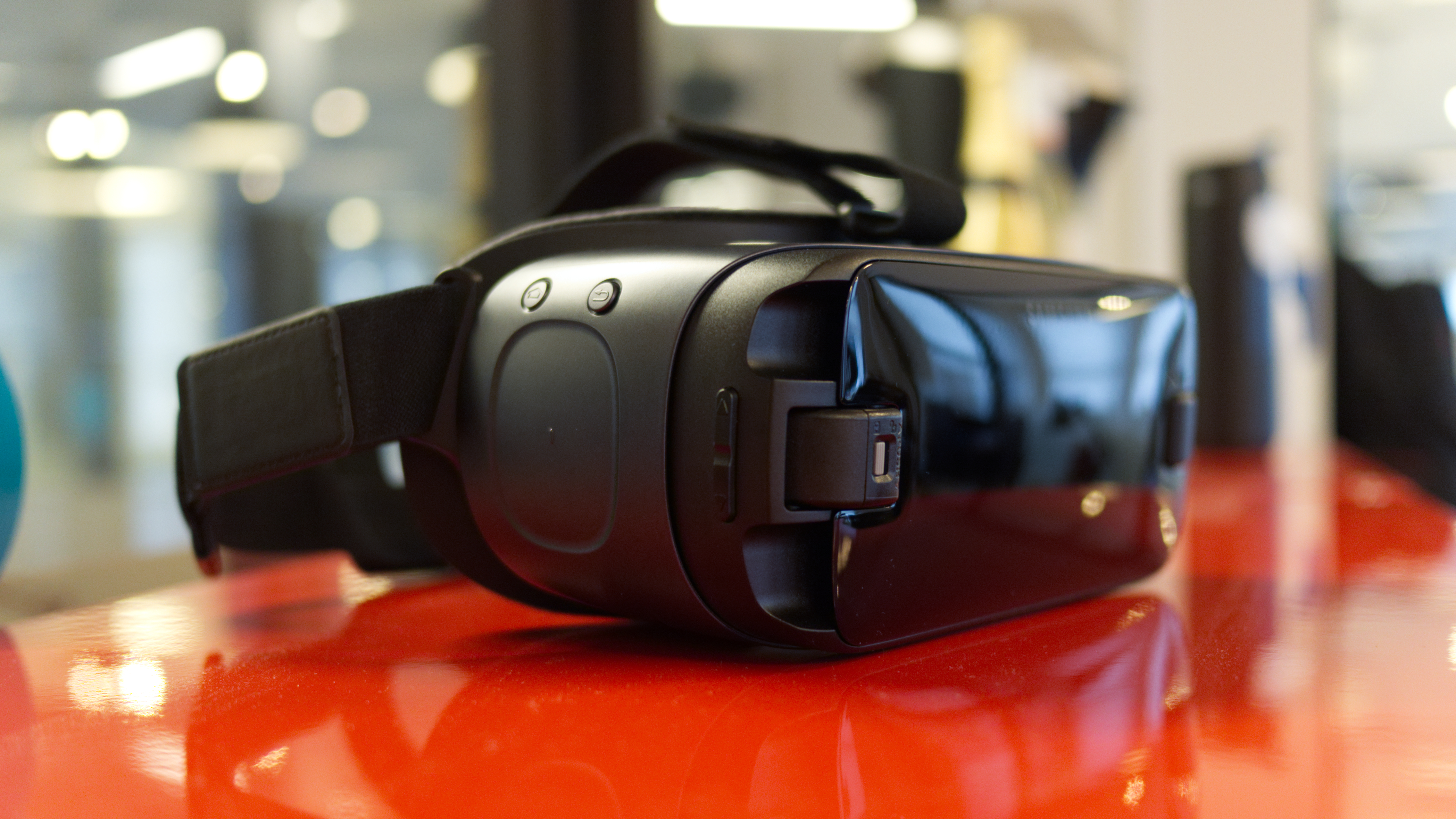
We won’t know how much Samsung and Google’s new VR headset will cost until the device is officially announced, but most rumors point to it boasting premium specs – so expect a premium price.
Some early reports suggested Samsung was looking at something in the $1,000 / £1,000 / AU$1,500 range (just like the Meta Quest Pro) though it may have changed its plans. After the Apple Vision Pro reveal, it’s believed Samsung delayed the device most likely to make it a better Vision Pro rival in Samsung’s eyes – the Vision Pro is impressive, as you can find out from our hands-on Apple Vision Pro review.
If that’s the case, the VR gadget might not only more closely match the Vision Pro’s specs it might adopt the Vision Pro’s $3,499 (about £2,725 / AUS$5,230) starting price too, or something close to it.
Samsung XR/VR headset: Release date
Much like its price, we don’t know anything concrete about the incoming Samsung VR headset's release date yet. But a few signs point to a 2024 announcement – if not a 2024 release.
Firstly, there was the teaser Samsung revealed in February 2023 when it said it was partnering with Google to develop an XR headset. It didn’t set a date for when we’d hear more, but Samsung likely wouldn’t make this teasing announcement if the project was still a long way from finishing. Usually, a more full reveal happens a year or so from the teaser – so around February 2024.
There was a rumor that Samsung’s VR headset project was delayed after the Vision Pro announcement, though the source maintained that the headset would still arrive in 2024 – just mid-to-late 2024, rather than February.
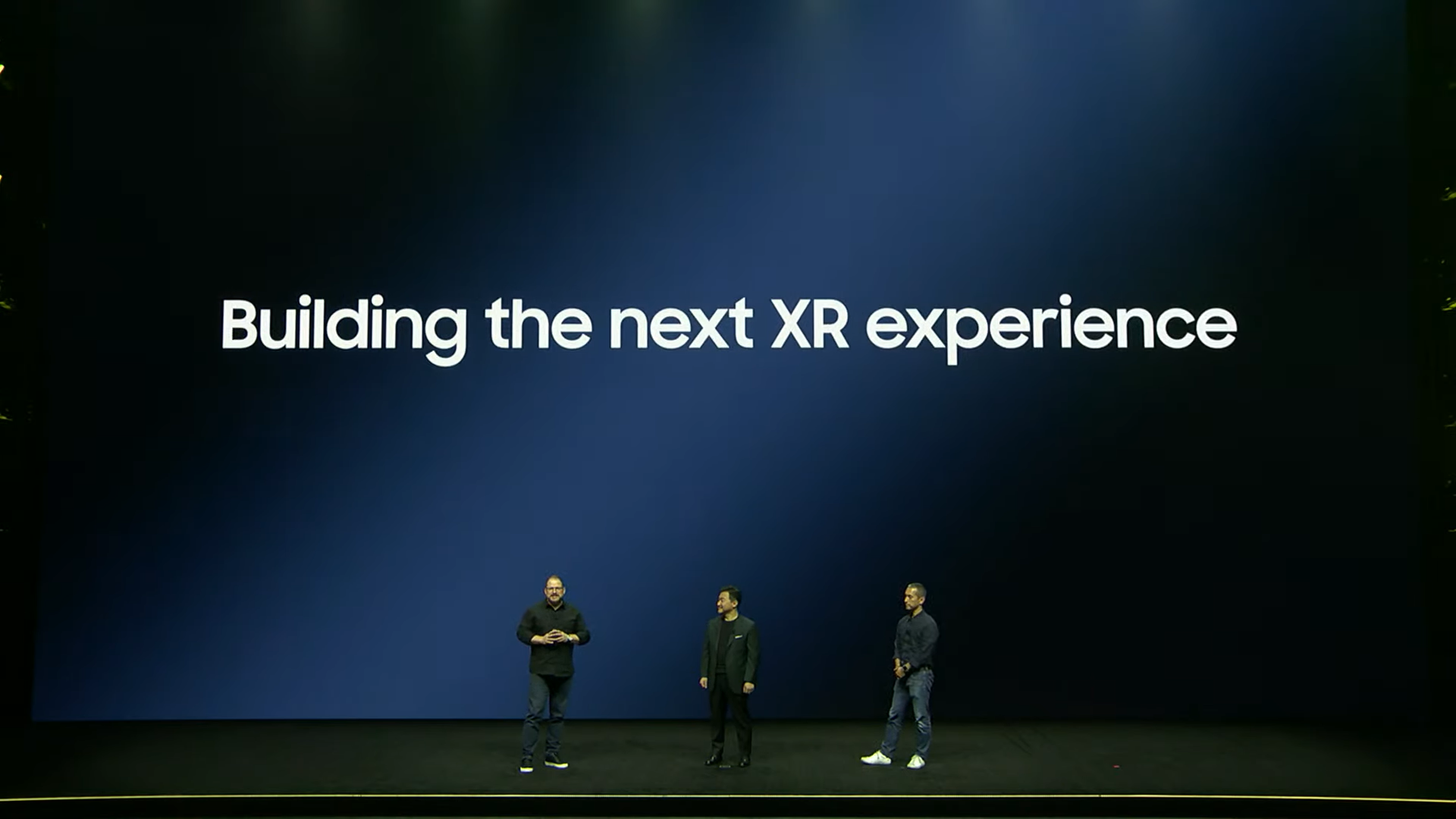
Then there’s the Snapdragon XR2 Plus Gen 2 chipset announcement. Qualcomm was keen to highlight Samsung and Google as partners that would be putting the chipset to use.
It would be odd to highlight these partners if its headset was still a year or so from launching. Those partners may have preferred to work with a later next-gen chip, if the XR/VR headset was due in 2025 or later. So this would again point to a 2024 reveal, if not a precise date this year.
Lastly, there have also been suggestions that the Samsung VR headset might arrive alongside the Galaxy Z Flip 6 – Samsung's folding phone that's also due to arrive in 2024.
Samsung XR/VR headset: Specs
A lot of the new Samsung VR headset’s specs are still a mystery. We can assume it’ll use Samsung-made displays (it would be wild if Samsung used screens from one of its competitors) but the type of display tech (for example, QLED, OLED or LCD), resolution, and size are still unknown.
We also don’t know what size battery it’ll have, or its storage space, or its RAM. Nor what design it will adopt – will it look like the Vision Pro with an external display, like the Meta Quest 3 or Quest Pro, or something all-new?
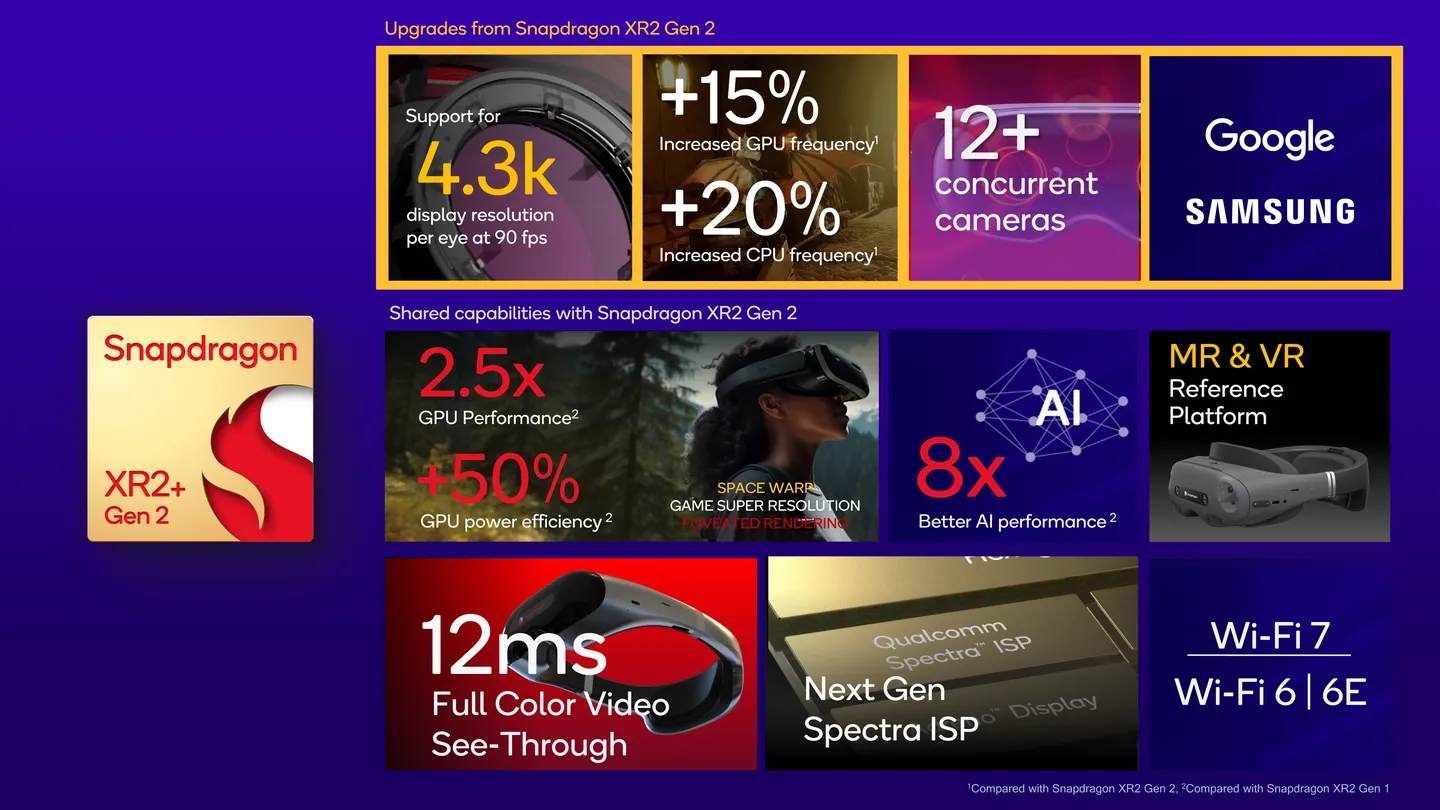
But we do know one thing. It’ll run (as we predicted) on a brand-new Snapdragon XR2 Plus Gen 2 chip from Qualcomm – an updated version of the chipset used by the Meta Quest Pro, and slightly more powerful than the XR2 Gen 2 found in the Meta Quest 3.
The upshot is that this platform can now support two displays at 4.3K resolution running at up to 90fps. It can also manage over 12 separate camera inputs that VR headsets will rely on for tracking – including controllers, objects in the space, and face movements – and it has more advanced AI capabilities, 2.5x better GPU performance, and Wi-Fi 7 (as well as 6 and 6E).
What we want to see from the new Samsung XR/VR headset
1. Samsung’s XR/VR headset to run on the Quest OS
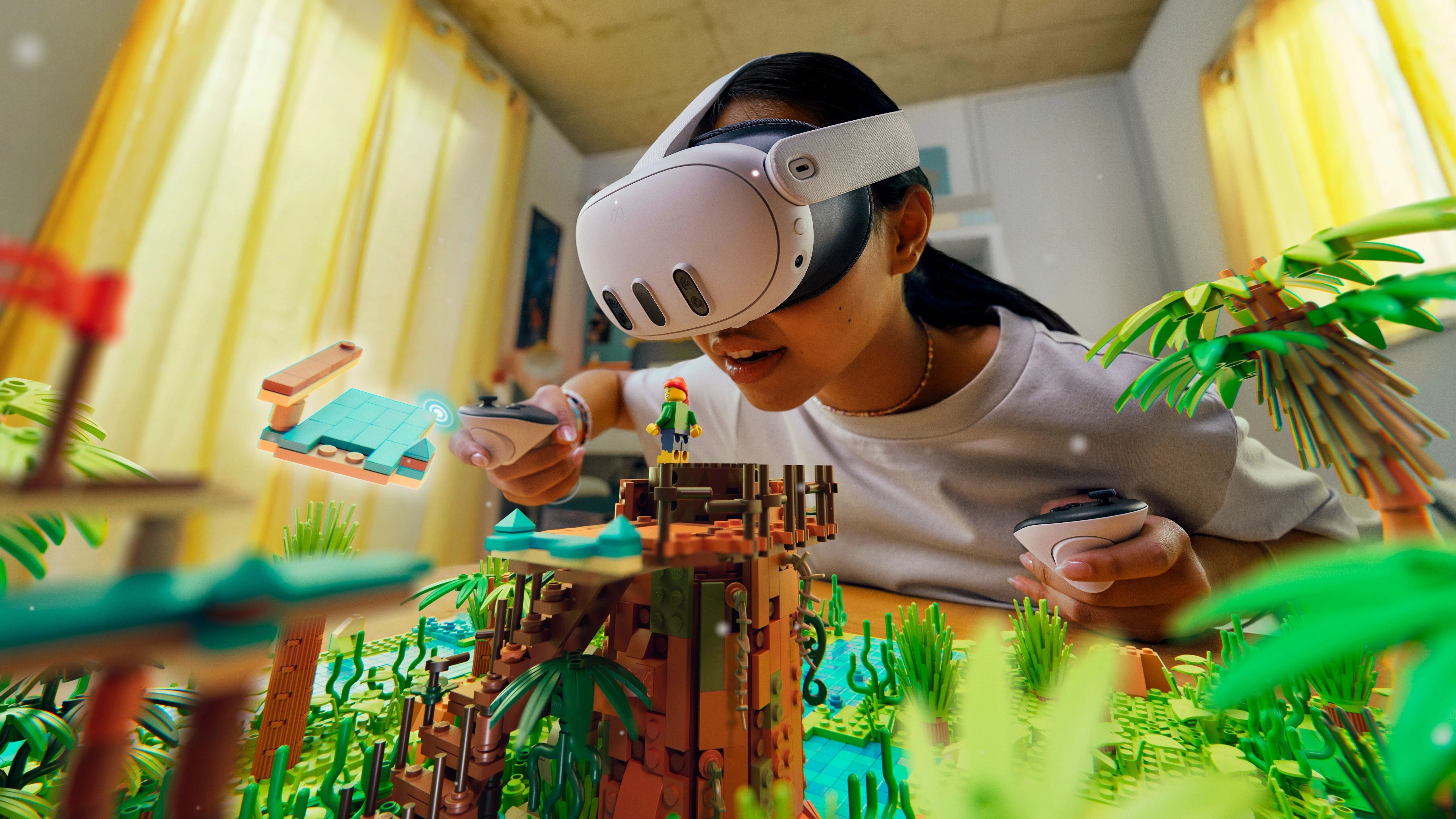
This is very much a pipe dream. With Google and Samsung already collaborating on the project it’s unlikely they’d want to bring in a third party – especially if this headset is intended to compete with Apple and Meta hardware.
But the Quest platform is just so good; by far the best we’ve seen on standalone VR headsets. It’s clean, feature-packed, and home to the best library of VR games and apps out there. The only platform that maybe beats it is Steam, but that’s only for people who want to be tethered to a PC rig.
By partnering with Meta, Samsung’s headset would get all of these benefits, and Meta would have the opportunity to establish its OS as the Windows or Android of the spatial computing space – which might help its Reality Labs division to generate some much-needed revenue by licensing the platform to other headset manufacturers.
2. A (relatively) affordable price tag
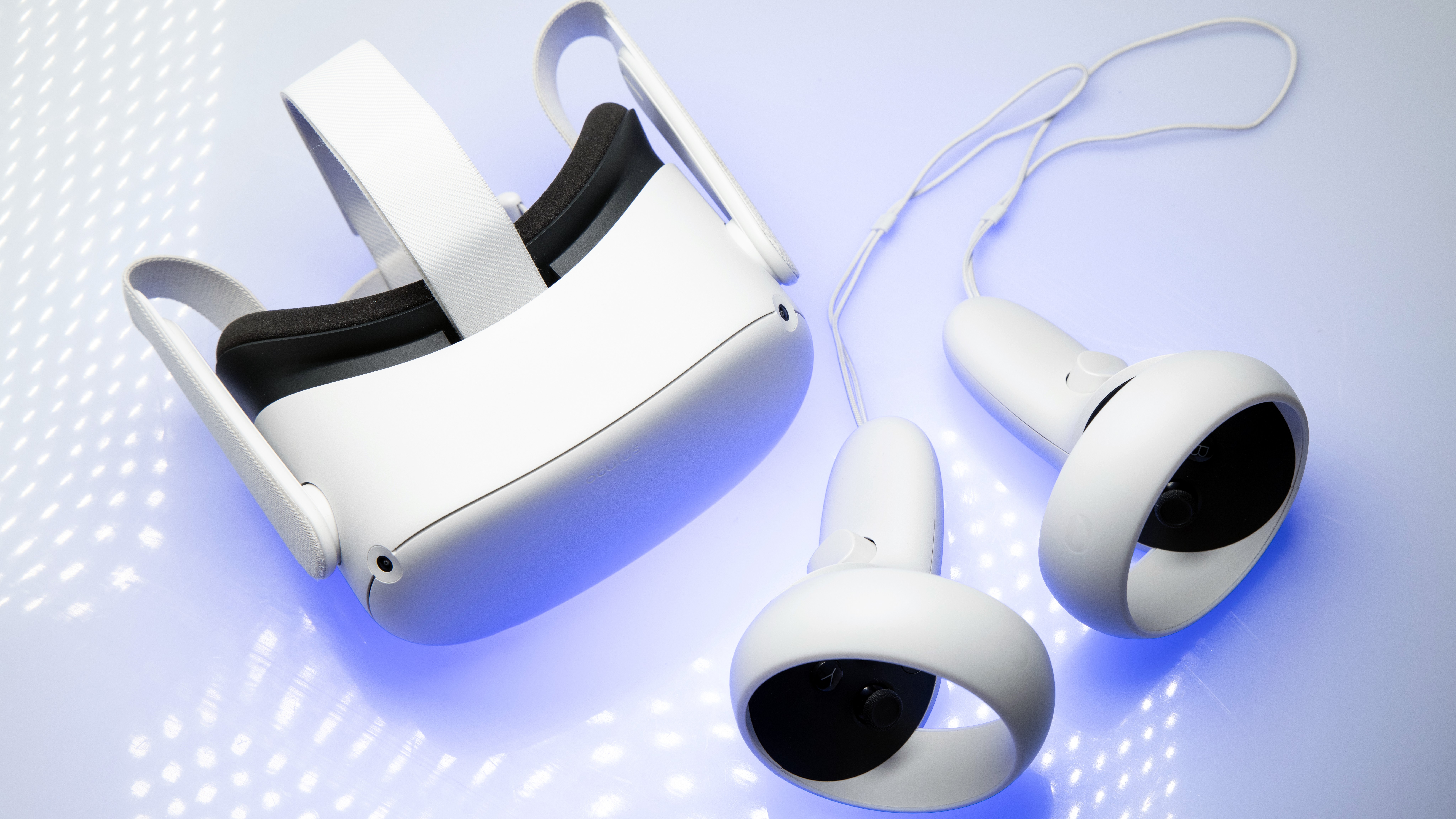
There’s only been one successful mainstream VR headset so far: the Oculus Quest 2. The Meta-made device has accounted for the vast, vast majority of VR headset sales over the past few years (eclipsing the total lifetime sales of all previous Oculus VR headsets combined in just five months) and that’s down to one thing; it’s so darn cheap.
Other factors (like a pandemic that forced everyone inside) probably helped a bit. But fundamentally, getting a solid VR headset for $299 / £299 / AU$479 is a very attractive offer. It could be better specs-wise but it’s more than good enough and offers significantly more bang for your buck than the PC-VR rigs and alternative standalone headsets that set you back over $1,000 when you factor in everything you need.
Meta’s Quest Pro, the first headset it launched after the Quest 2 that has a much more premium $999 / £999 / AU$1,729 price (it launched at $1,500 / £1,500 / AU$2,450) has seemingly sold significantly worse. We don’t have exact figures but using the Steam Hardware Survey figures for December 2023 we can see that while 37.87% of Steam VR players use a Quest 2 (making it the most popular option, and more than double the next headset) only 0.44% use a Quest Pro – that’s about 86 times less.
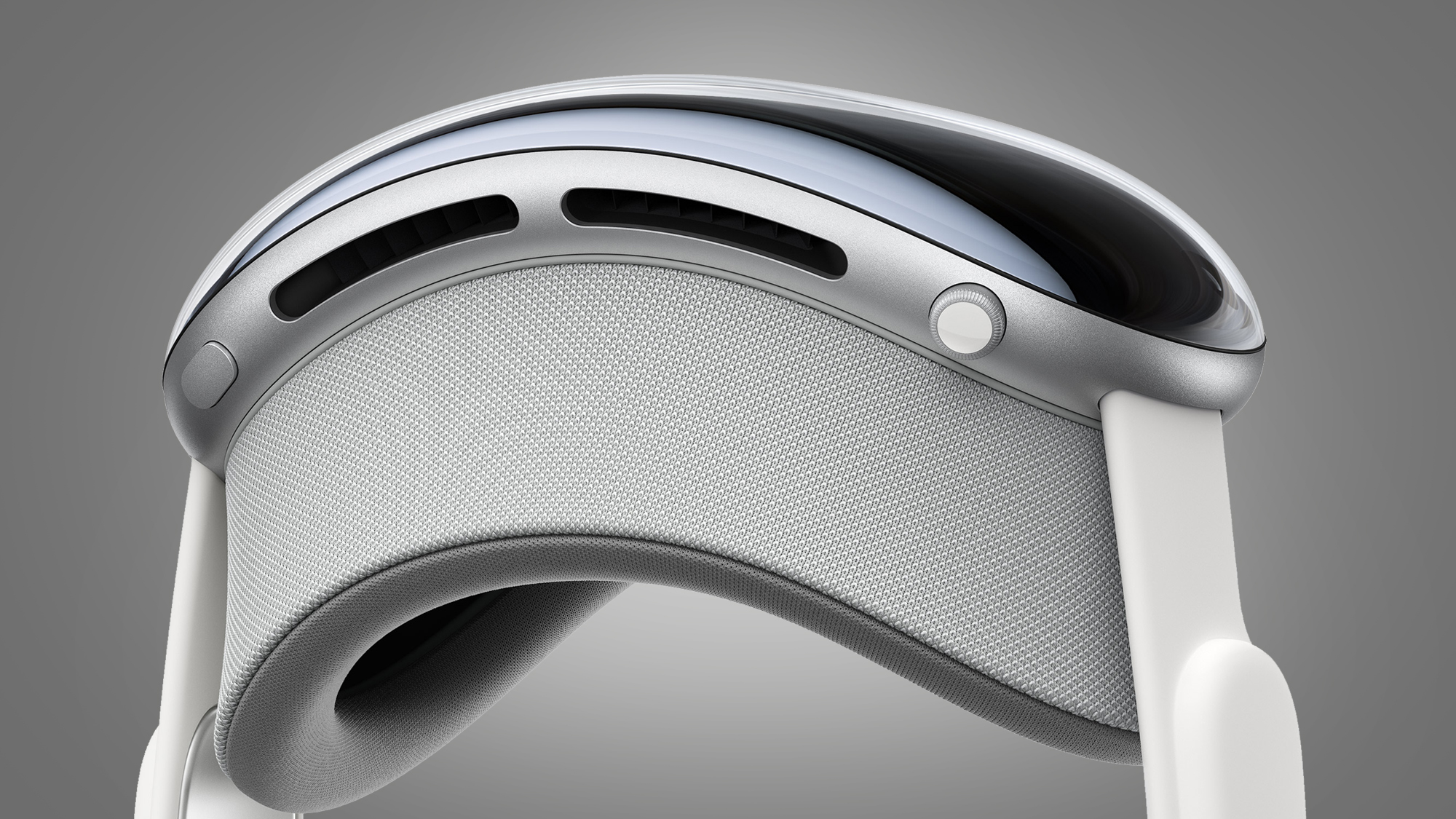
So by making its headset affordable, Samsung would likely be in a win-win situation. We win because its headset isn’t ridiculously pricey like the $3,499 (around £2,800 / AU$5,300) Apple Vision Pro. Samsung wins because its headset has the best chance of selling super well.
We’ll have to wait and see what’s announced by Samsung, but we suspect we’ll be disappointed on the price front. A factor that could keep this device from becoming one of the best VR headsets out there.
3. Controllers and space for glasses
We’ve combined two smaller points into one for this last ‘what we want to see’.
Hand tracking is neat, but ideally it’ll just be an optional feature on the upcoming Samsung VR headset rather than the only way to operate it – which is the case with the Vision Pro.
Most VR apps are designed with controllers in mind, and because most headsets now come with handsets that have similar button layouts it’s a lot easier to port software to different systems.
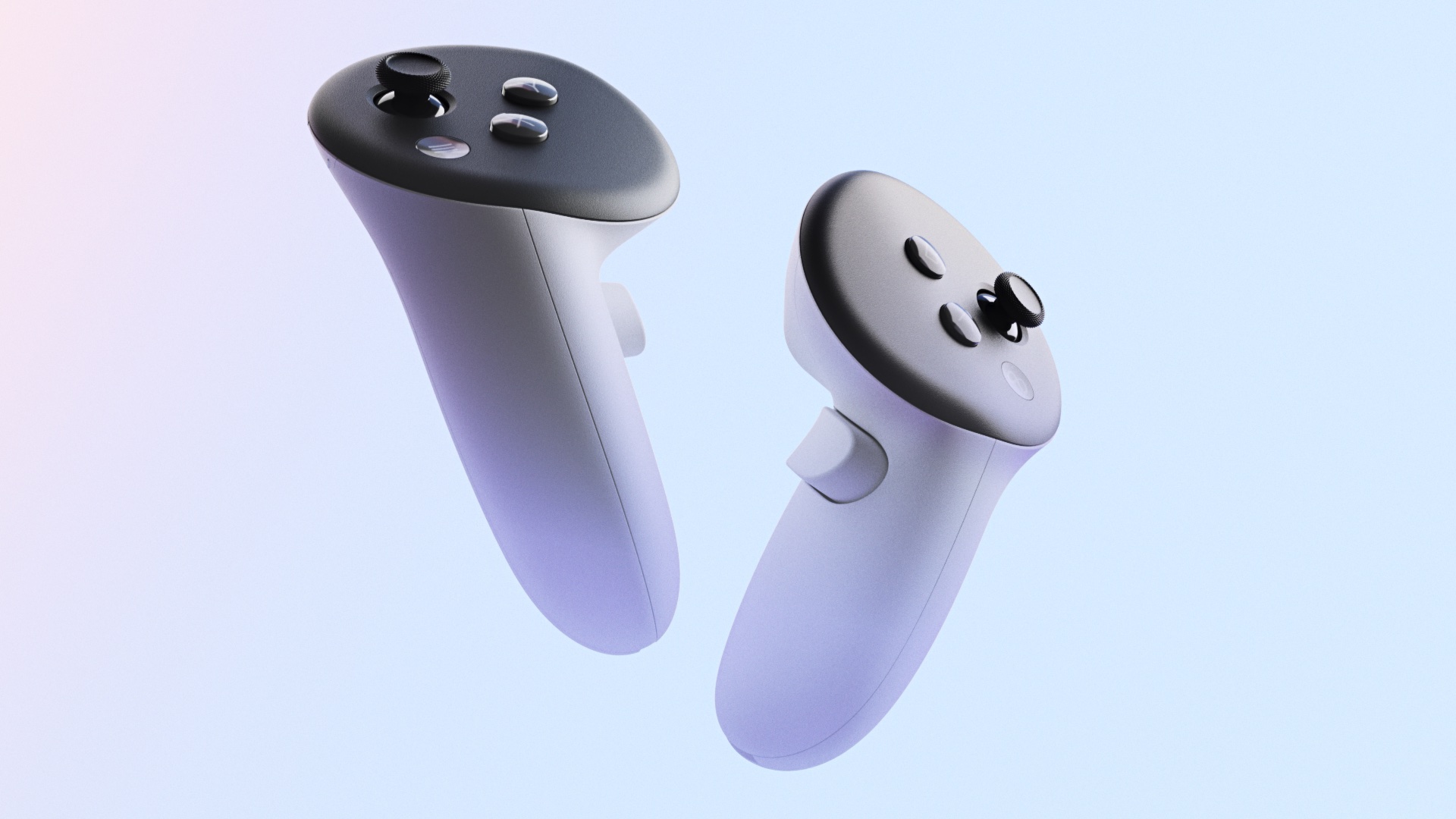
There are still challenges, but if your control scheme doesn’t need to be reinvented, developers have told us that’s a massive time-saver. So having controllers with this standard layout could help Samsung get a solid library of games and apps on its system by making it easier for developers to bring their software to it.
We’d also like it to be easy for glasses wearers to use the new Samsung VR headset. The Vision Pro’s prescription lenses solution is needlessly pricey when headsets like the Quest 2 and Quest 3 have a free in-built solution for the problem – an optional spacer or way to slightly extend the headset so it’s further from your face leaving room for specs.
Ideally, Samsung’s VR headset would also have a free and easy solution for glasses wearers, too.




0 Comments
If you have any doubts, Please let me know